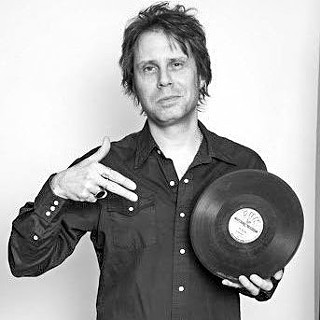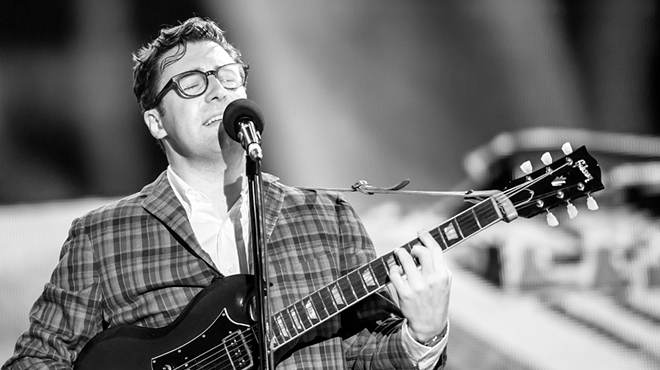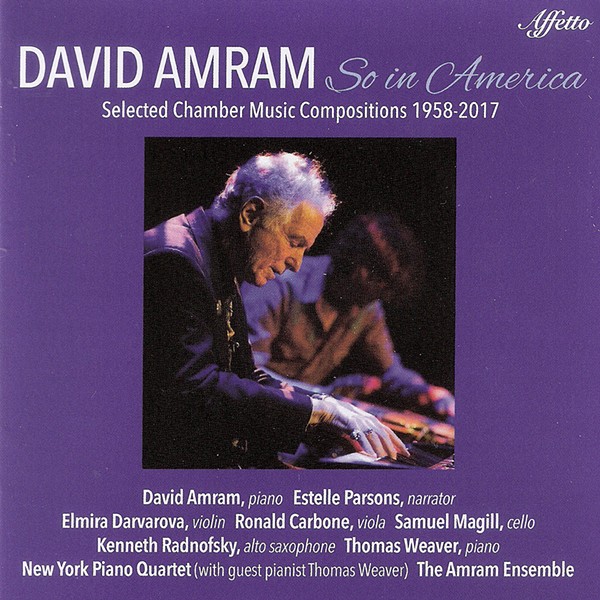Like Mitropoulis had, Parker—"Bird," as the saxophonist was known to bop fans—took Amram under his wing. "His music made me aware that every sound is related to every other sound," writes Amram in his 1968 memoir, Vibrations. "He was like an architect and a painter and a poet all at the same time. His attitude of an open mind and an open heart, of playing with anybody, listening to everything, trying to appreciate everything and then being able to distill all these experiences in his own way—all this affected me and a whole generation of people who were aware enough to get the message." Gillespie's forays into Pan-African music with Cuban percussionist Chano Pozo, as well as the general international climate of DC, also impacted Amram's eventual work as a world-music pioneer.
After a stint in the Army that saw him stationed near Paris and recording with Lionel Hampton, Amram landed in New York, where his uncommon choice of French horn as his first instrument helped him stand out in the crowded Gotham jazz scene. He performed with Charles Mingus's Jazz Workshop and bassist Oscar Pettiford, co-led a quartet with saxophonist George Barrow, and led his own bands. One of the regular attendees at his gigs was Jack Kerouac. "He used to come hear me at the Five Spot," Amram remembers. "We bumped into each other at a BYOB party and, besides knowing we both liked jazz and literature, learned that we both spoke French. Jack knew some French folk songs and sang them for me."
Their shared enthusiasm for music and words and wide-eyed worldview saw the pair become fast friends, bringing Amram into Kerouac's circle of fellow Greenwich Village poets and writers—the architects of the Beat movement. In December 1957, at the Brata Gallery on East 10th Street, Amram accompanied Kerouac at the first jazz-poetry reading in New York, which was followed a few months later with similar events elsewhere. "Sometimes he'd sing while I was playing the horn, improvise verses," Amram says. "He had a phenomenal ear. It was like playing duets with a great musician." Kerouac and Amram starred alongside poets Allen Ginsberg, Gregory Corso, and Peter Orlvosky, artist Larry Rivers, and others in Robert Frank and Alfred Leslie's landmark 1959 experimental film Pull My Daisy and cowrote its surreal theme song. "Jack was open, enthusiastic, and kind," says Amram, who collaborated with the On the Road novelist for over 12 years. "The whole 'Beatnik' thing got big and people saw it as this gravy train they could jump on. Jack was the engine that pulled that train, and he didn't dig it at all. He was never in it to be tabloid trash."
While he was working with the reluctant bard of the Beats, Amram was, indirectly, also working with the Bard: From 1956 to 1967 he composed the scores for Joseph Papp's newly launched Shakespeare in the Park series (in 1968, Papp penned the libretto and Amram composed the music for an operatic adaptation of Shakespeare's comedy Twelfth Night). His music for Elia Kazan's 1958 production of Archibald MacLeish's play "J.B." won a Pulitzer Prize, and further fame came when he scored the hit movies Splendor in the Grass (1961) and The Manchurian Candidate (1962); Arthur Miller's play "After the Fall" (1964; during his stint as Lincoln Center Theater's composer and music director); and TV's The Final Ingredient: An Opera of the Holocaust (1965). In 1966, Leonard Bernstein appointed him as the New York Philharmonic's first composer-in -residence. In Manhattan, it seemed, the Feasterville farm boy had found his fertile row.
But instead of joining the Hollywood or Broadway establishments, he remained a restless artistic explorer, especially of the music and customs of other cultures. His mesmerizing 1971 double album No More Walls crosses jazz, classical, and South American, Middle Eastern, and Afro-Cuban music but found few takers upon its initial release. "People didn't get it," says Amram, a deep student of Native American music who has adapted those indigenous styles for classical chamber works. "It was too way out for the classical audience, and for the avant-garde jazz audience it wasn't the set-the-piano-on-fire stuff they were looking for." In time, though, the album would come to be seen a cornerstone of world-fusion music.
Amram's next major culture-spanning effort came in 1977, when a contingent including him, Dizzy Gillespie, Earl "Fatha" Hines, Stan Getz, and other top jazzmen sailed to Havana to be among the first legally visiting US citizens in Cuba in 16 years and to perform with local musicians. The resulting album, Havana/New York, features trumpeter Arturo Sandoval and alto saxophonist Paquito D'Rivera of the legendary band Irakere. "At first nobody [among the American musicians] knew what the protocol was or how we should act around the Cuban players," says Amram. "But that all went away really quickly. Being stuck, politically, between the US and Russia was hard on them. We learned that they appreciated a lot of things about American culture more than we did!" Last month, nearly 41 years after the milestone concert, Amram returned to Cuba to perform at the Havana International Jazz Festival.













